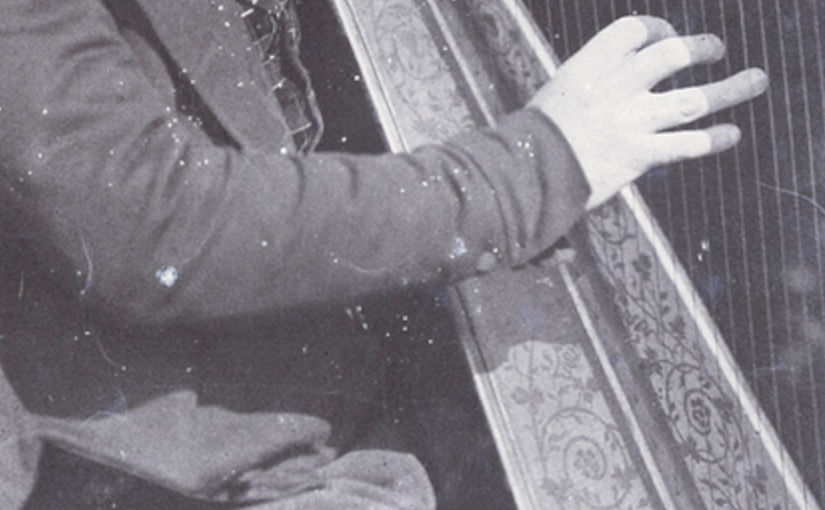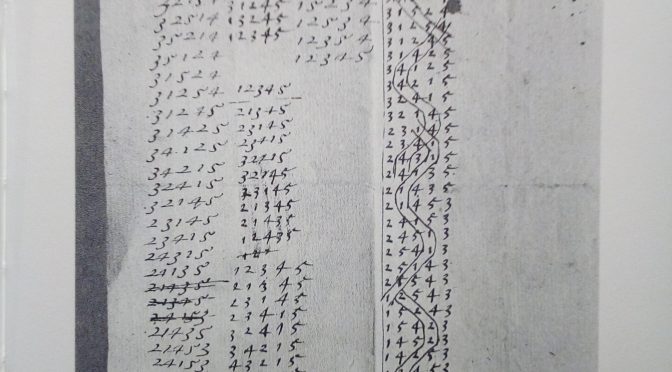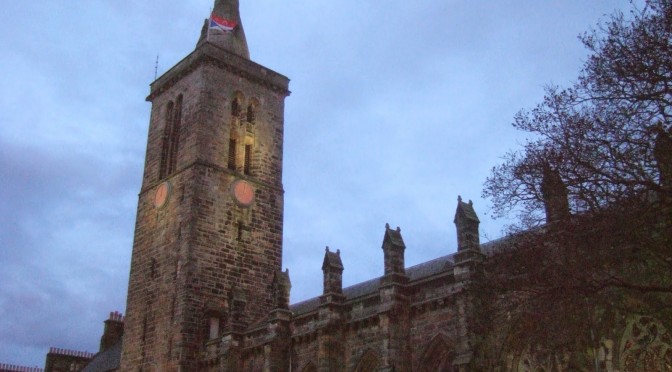We can just continue with Patrick Byrne. This post follows his trip to Scotland in the first half of 1847, and his return to Ireland for the second part of 1847; and then his work in the English midlands in the first part of 1848, and back in Ireland especially around County Cavan in the summer and early autumn of 1848.
Continue reading Patrick Byrne part 7: 1847-8Tag: bells
harpers listening to bells
I was reviewing my interview with Mícheál Ó Catháin for forthcoming inclusion on his State of the Art interview series, and a comment on my upbringing in the English change-ringing tradition started me thinking about the potential soundscape of change-ringing in the ears of the old Irish harp tradition bearers.
The Cambridge 48 – an early 17th century composition
“But Cambridge forty-eight, for many years, was the greatest peal that was rang or invented” (Tintinnalogia p.2)
In Duckworth’s Tintinnalogia, published in 1668, he gives the full text of “three old peals on five bells, which (though rejected in these days yet) in former times were much in use” (p.15-17). I am interested in these three as rare testimony of the state of change ringing in its true infancy in the early to mid 17th century.
Continue reading The Cambridge 48 – an early 17th century composition
Performance
A few different things I have been reading recently have come together in some vague and half-baked ideas on performance issues.
Extended compositions or performances
I am listening to last night’s BBC broadcast of The Well-Tuned Piano by La Monte Young. This fascinating five hour performance has prompted many thoughts and half-baked ideas on the nature of this kind of music.
Firing the bells
I have never done this, or seen it done, or even heard it done. But here is a video on Youtube showing the ringers at Blackburn firing! Thanks to the Ringing World letters page for this link! Continue reading Firing the bells
Graduation ringing
Today was the (delayed) St Andrews day graduations in the University of St Andrews. The university requested half an hour of bellringing before and after all three ceremonies plus the chapel service – a total of seven 30 minute sessions! Continue reading Graduation ringing
Two-bell ringing
Sometimes at St Salvators tower we are short-handed, and we have been gradually working our way though The Chris Higgins Guide To Three-Bell Ringing (ed. Ian Chandler, Kirby Manor Press 2003). I have been enjoying the elegant simplicity of the music as well as the physical challenge of placing and striking the bell well.
Today, being the first day of semester at the University of St Andrews, and also the morning of the clocks changing, there were only two of us. There are two two-bell methods in the book, and we tried them both – Cambridge being a little more pleasant, with more intellectual challenge as well as less physical. But then I fancied something different and so invented on the spot some stedman-style methods which I see now loking though my notes also share some charateristics of the ultimate 3-bell method, Shipping Forecast.
The idea is to lie, point and lie. You can lie for 2 or 3 blows, and you can arrange the blocks of 2 and 3 lying adjacent or alternating.
x=xx=x=xx= or x=xx==x=xx== or x=xx==x==xx=
We rang the three and the five, the University’s two medieval bells, whose minor 3rd interval was to me the characteristic sound of the tower before the augmentation in 2010.
I wonder if it would be possible to make a connection with the binary music of Robert ap Huw and the other late medieval / early modern Welsh secular instrumentalists? Was this most fundamental art of change ringing used before changes on higher numbers were developed?
In medieval Welsh notation we might write for the three methods above
00100.11011 and 001000.110111 and 001000.111011
Finally we discussed a little what to call this type of ringing. The book unimaginatively describes these methods using just the word “two”. We can do better than that. The convention for odd numbers of bells is to count the number of simultaneous changes possible, so on 3 is singles, 5 is doubles, 7 is triples, and so on. On even numbers, Latin descriptors are used: 4 is minimus, 6 is minor, 8 is major, &c. I proposed “micromus” but I don’t know if that is too silly!
Quarter Peal
On Tuesday evening there were exactly six of us for the practice in St Salvator’s tower, and so instead of the usual practice we decided to try for a quarter peal of Cambridge. I was very feart and volunteered to ring the treble (I had been learning Norwich and it had chased all of the Cambridge place bells out of my memory!)
I always enjoy ringing treble or tenor as I find it a challenge to strike as well as I can manage and to use good striking to help keep the rythym and flow of the others going well.
I also purchased the download of the Quarter peal rung at St Cuthbert’s, Prospect, New Zealand. It is quite something to listen to this whole thing, and it gave me yet another thing to think about, the sound and music, how different it is from an outside listener to an inside participant.
The rythym of the recorded performance is much harder to follow than the rythym you hear when ringing – the act of participating gives a real visceral interaction with the rythyms of the sound, and everything seems to move more slowly and clearly. I suppose there is something similar going on with all kinds of musical performance but the logic of the bells seems to highlight this more than the freeform melodies and harmonies of other instruments.
Installation of new bells in St Andrews
Here is a curious little film produced by the University. It starts with footage of the bells being lifted into the tower in the autumn of 2010, and an interview with the main donor who paid for them. Then there is footage of the religious ceremony which marked their installation. Finally, from 7:00 is footage of the bells being rung.
http://www.st-andrews.ac.uk/about/UniversityChapels/550/storyofthebells/





